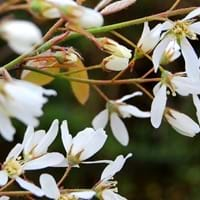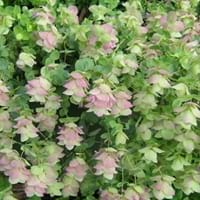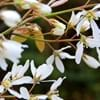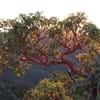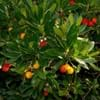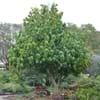Life Span
Perennial
Perennial
Origin
United States, Northeastern United States, Mid-Atlantic United States, Southeastern United States, Central United States, South-Central United States
Hybrid origin
Types
shadbush, wild plum
Kent Beauty
Amethyst Falls
Barbara Tingey
Habitat
Swamps, Thickets, Woods
Grassland, Open scrub, Rocky areas
USDA Hardiness Zone
4-9
5-8
Sunset Zone
2a, 2b, 3a, 3b, 4, 5, 6
Not Available
Habit
Oval or Rounded
Clump-Forming
Minimum Height
Not Available
Minimum Width
Not Available
Flower Color Modifier
Bicolor
Bicolor
Fruit Color
Red, Violet, Plum
Not Available
Leaf Color in Spring
Green, Gray Green
Dark Green
Leaf Color in Summer
Green
Dark Green
Leaf Color in Fall
Yellow, Red, Orange, Orange Red
Dark Green
Leaf Color in Winter
Not Available
Light Green
Plant Season
Spring, Summer, Fall
Summer, Fall
Sunlight
Full Sun, Partial Sun
Full Sun
Type of Soil
Clay, Loam, Sand
Loam
The pH of Soil
Acidic, Neutral, Alkaline
Neutral, Alkaline
Soil Drainage
Average
Well drained
Bloom Time
Spring
Late Summer, Early Fall
Tolerances
Not Available
Drought
Where to Plant?
Ground
Container, Ground, Pot
How to Plant?
Grafting, Seedlings, Stem Planting
Seedlings
Plant Maintenance
Medium
Medium
Watering Requirements
occasional watering once established
Allow soil to be completely dry in between waterings, Does not require lot of watering, Water twice a day in the initial period, Water when soil is dry
In Summer
Drought Tolerant
Lots of watering
In Spring
Moderate
Moderate
In Winter
Less Watering
Average Water
Soil pH
Acidic, Neutral, Alkaline
Neutral, Alkaline
Soil Type
Clay, Loam, Sand
Loam
Soil Drainage Capacity
Average
Well drained
Sun Exposure
Full Sun, Partial Sun
Full Sun
Pruning
No need to prune, Prune if you want to improve plant shape
Remove damaged leaves, Remove dead branches, Remove dead leaves
Fertilizers
All-Purpose Liquid Fertilizer, Less fertilizing
All-Purpose Liquid Fertilizer
Pests and Diseases
Bacterial leaf spot, Beetles, Powdery mildew, Red blotch, Rust
Red blotch
Plant Tolerance
Drought, Heat And Humidity
Drought
Flower Petal Number
Single
Single
Fragrant Leaf
No
Not Available
Foliage Texture
Medium
Fine
Foliage Sheen
Matte
Matte
Attracts
Birds, Deers, Hoverflies
Butterflies
Allergy
no allergic reactions
Not Available
Aesthetic Uses
Not Used For Aesthetic Purpose
Showy Purposes
Beauty Benefits
Improve skin condition, Not Available, Skin Problems
Not Available
Environmental Uses
Agroforestry, Food for animals, Food for birds, No fertilizer, pesticides, or herbicides needed, soil stabilisation
Air purification
Medicinal Uses
Diarrhea, Gastrointestinal disorders, Menstrual Disorders
Bloating, Bronchitis, Cough, Cramps, Croup, Gastrointestinal disorders, Headache, Rheumatoid arthritis, Urinary tract problems
Part of Plant Used
Fruits
Leaves
Other Uses
Food for animals, Used As Food
Employed in herbal medicine, Used As Food
Used As Indoor Plant
No
Yes
Used As Outdoor Plant
Yes
Yes
Garden Design
Edible, Feature Plant, Foundation, Fruit / Fruit Tree, Mixed Border, Screening / Wind Break, Shade Trees
Container, Edging, Groundcover, Mixed Border
Botanical Name
AMELANCHIER arborea
ORIGANUM 'Rose Dome'
Common Name
Common Serviceberry, Downy Serviceberry, Juneberry, Shadbush
Ornamental Oregano
In Hindi
Juneberry
सजावटी अजवायन
In German
Felsenbirnen
Ornamental Oregano
In French
Amélanchier
ornement origan
In Spanish
Amelanchier
Ornamentales orégano
In Greek
Juneberry
καλλωπιστικά Ρίγανη
In Portuguese
Amelanchier
ornamental Oregano
In Polish
Świdośliwa
ozdobne Oregano
In Latin
Amelanchier
decentius Oregano
Phylum
Magnoliophyta
Not Available
Class
Magnoliopsida
Magnoliopsida
Order
Rosales
Not Available
Family
Rosaceae
Lamiaceae
Genus
Amelanchier
Origanum
Clade
Dicotyledonous
Angiosperms, Eudicots
Tribe
Not Available
Mentheae
Subfamily
Malvoideae
Pitcairnioideae
Number of Species
Not Available
Importance of Juneberry and Ornamental Oregano
Want to have the most appropriate plant for your garden? You might want to know the importance of Juneberry and Ornamental Oregano. Basically, these two plants vary in many aspects. Compare Juneberry and Ornamental Oregano as they differ in many characteristics such as their life, care, benefits, facts, etc. Every gardener must at least have the slightest clue about the plants he wants to plant in his garden. Compare their benefits, which differ in many ways like facts and uses. The medicinal use of Juneberry is Diarrhea, Gastrointestinal disorders and Menstrual Disorders whereas of Ornamental Oregano is Bloating, Bronchitis, Cough, Cramps, Croup, Gastrointestinal disorders, Headache, Rheumatoid arthritis and Urinary tract problems. Juneberry has beauty benefits as follows: Improve skin condition, Not Available and Skin Problems while Ornamental Oregano has beauty benefits as follows: Improve skin condition, Not Available and Skin Problems.
Compare Facts of Juneberry vs Ornamental Oregano
How to choose the best garden plant for your garden depending upon its facts? Here garden plant comparison will help you to solve this query. Compare the facts of Juneberry vs Ornamental Oregano and know which one to choose. As garden plants have benefits and other uses, allergy is also a major drawback of plants for some people. Allergic reactions of Juneberry are no allergic reactions whereas of Ornamental Oregano have Not Available respectively. Having a fruit bearing plant in your garden can be a plus point of your garden. Juneberry has showy fruits and Ornamental Oregano has no showy fruits. Also Juneberry is not flowering and Ornamental Oregano is flowering. You can compare Juneberry and Ornamental Oregano facts and facts of other plants too.
